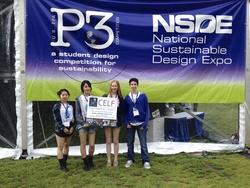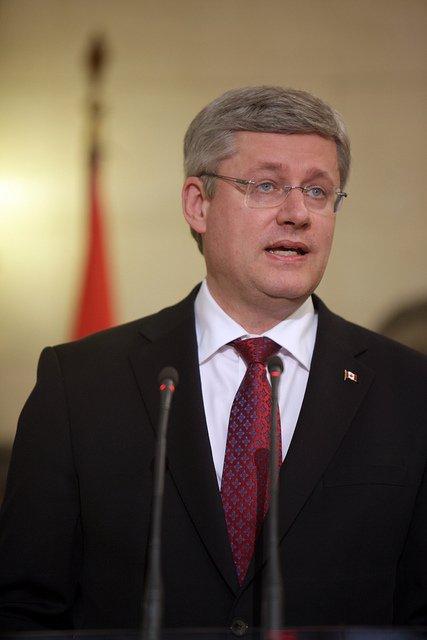H&M Launches Global Change Award To Further Textile Recycling


When it comes to Swedish clothing retailer H&M, the news just gets better. Earlier this week, I covered the company’s new denim clothing line made from recycled materials. On August 25, H&M Conscious Foundation, a nonprofit global foundation, announced the launch of its Global Change Award for textile recycling innovation. It’s the first year of the award which will reward five winners, chosen by a jury, with a shared grant of $1.16 million.
H&M creates fast fashion and sells it globally. It’s also a company that strives to reduce its environmental impact. The Global Change Award is one way that the retailer is addressing the struggle to meet its goal of incorporating more recycled materials into its designs.
The winners will also have access to an innovation accelerator, in collaboration with Accenture and KTH Royal Institute of Technology in Stockholm, Sweden. The winners will get support and knowledge from the innovation accelerator, beginning with an innovation boot camp by KTH and then guidance from Accenture. The winners will also be part of a one-year training and coaching program.
H&M is involving the public in the selection process. The public will be allowed to vote online about the distribution of half the grant. The results will be unveiled at an award ceremony in Stockholm in February 2016.
“Ground-breaking, game-changing ideas can come from anywhere, so the challenge is open to anyone,” said Karl-Johan Persson, board member of the H&M Conscious Foundation and CEO of H&M. “Each year the Global Change Award aims to find the truly brave and bold ideas that make change. I’m also eager to see how the fashion industry as a whole will embrace the challenge of closing the loop.”
Reducing textile waste is badly needed, as a paper by law student Celia Kerr reveals. In New York City alone, more than 200,000 tons of textiles are thrown away every year. In 2012, used textiles accounted for an estimated 14.3 million tons of waste, according to the EPA, or 5.7 percent of total municipal solid waste stream. The recycling recovery rate was only 15.7 percent. That means most used textiles, those unwanted pieces of clothing so many of us chuck in the garbage, wound up in a landfill. Garbage in a landfill emits methane, a greenhouse gas with a warming potential 21 times that of carbon dioxide.
H&M proves that a fast fashion company can help make a dent in the millions of textiles thrown away. “We must take significant, immediate action to minimize the strain of our fast fashion addiction,” Kerr wrote. Clearly, the Swedish clothing retailer with a global reach understands that action is needed.
Image credit: H&M
Why Giving Back to the Community Should Be a Major Goal for All Businesses


By Kayla Matthews
Businesses everywhere have the resources and reach to provide a major positive impact in their communities. Whether it's by supporting a local charity, voluntarily teaching skills to others or sponsoring an event, participating in acts of "giving back" has extensive benefits for a business well beyond the obvious benefit of helping the community.
A community-minded business will reap benefits from its charitable mindset, including positive PR, high employee morale and improved connections — all areas that can aid in long-term profits.
These multi-faceted benefits make it easy to see why giving back to the community should be a major goal for all businesses. Businesses are tending to agree at a growing rate: Philanthropy grew for 64 percent of companies between 2010 and 2013, in addition to increasing by more than 10 percent for 52 percent of companies.
Improved employee morale
One prominent benefit of a business giving back to the community is the response from employees. Typically, if employees see that their employer is committed to giving back to the community, they will gain more respect for them. A work environment with a highly respected leader results in more communication and efficiency, since morale is likelier to be improved in a work environment where the leader is trusted and respected.
Similarly, if an employer gives their employees an opportunity to give back, they will feel more fulfilled in their work. According to business philanthropy consultant Erin Giles, the ability to volunteer provides employees with leadership opportunities that can increase staff performance and provide a better sense of fulfillment.
Positive PR
People love feel-good stories, so it’s a good thing for willing community-minded businesses that they are easy to create with them at the forefront. It’s easy for a business to use giving back as an incentive to appear in news outlets positively, especially if it’s a public gesture like sponsoring a local charitable event or holding a free workshop for the underprivileged.
Positive news has a tendency of being shared rampantly on social media, which on a local Facebook group can be a fantastic way for a business to gain exposure in addition to becoming a well-respected presence in the community, resulting in more clients, profits and overall connections.
More connections
Philanthropy can be a wonderful gateway into a network of professionals and leads alike that can help elevate a business from obscurity to prolific success. Philanthropy organizations often include the “who’s who” of corporate bigwigs on their board of directors, because they understand how integral philanthropy is to a business’ success and public perception. If a business owner can touch shoulders with these types, they have the opportunity to grow their business at a rapid pace.
Similarly, giving to their local community can provide a business with connections to local leaders — such as government or religious figures — who can rapidly make a business the local “go-to” for that specific niche with their endorsement.
A great example of this was when Facebook donated $120 million to schools local to the community where they relocated, easing local resident’s fears that the tech giant’s arrival would be a negative. Now, because of its local connections and giving, Facebook is revered in the community.
Other similarly savvy examples of businesses giving back include:
- Apple wisely values the role of an employee giving their time to philanthropic efforts, matching employee donations to charities and raising over $50 million as a result.
- Google’s community programs represent a great example of a business using their vast resources to give to a variety of causes, from accessible education to seed funding.
- CJ Pony Parts partnered with Make-A-Wish to give a Mustang-loving boy battling heart issues a day he won’t ever forget, complete with a fun Mustang ride and free swag.
- Pepsi shows a value for community service and volunteering via a wide array of programs, in addition to matching any employee donations to charity up to $10,000. Plus, if an employee donates over 50 hours to a single organization, Pepsi will match their donation at a 2:1 ratio.
These are just a few of many very successful businesses who have witnessed the positive impacts of giving back to the community.
Get your business to start giving back, and see what positive impacts you can make!
Image by Gabriel Santiago via Unsplash
Kayla Matthews is a healthy living writer and blogger who writes for The Huffington Post and The Climate Group. Follow her on Facebook or atProductivityTheory.com.
How Can Your Community Benefit From Schools Educating For Sustainability?


Submitted by Katie I. Ginsberg
This is the most recent article in our series "Education for a Sustainable Future". For more articles, go to http://www.csrwire.com/blog/series/86-education-for-a-sustainable-future/posts
“If we teach today's students the way we taught them yesterday, we rob them of tomorrow." John Dewey
Both students and teachers can be apprehensive about back to school time. Both students and teachers share many of the same goodbyes and hellos as they return through the school doors. They wave goodbye to the comfort of bell-free summer, homework-free evenings, and having more choices of how they spend their time in between. For students, it marks the end of homework-free evenings and sleeping in. For teachers it brings new challenges that come with getting to know their new students and meeting new expectations that come with each passing year. This year feels like there is an added urgency in the air, on top of the Common Core and seeming ever-expanding call for teacher and student accountability, there is a bigger issue looming that dwarfs these concerns.
How will we remember 2015-16 school year? As the year that people heeded the alarm bells issued by Pope Francis, UN Secretary General Ban Ki-Moon and President Obama on climate change as an irrefutable issue that must be addressed? Or will it pass like 2006 when Al Gore’s Inconvenient Truth, sounded alarms that many ignored. For those who work in education, these questions are especially critical, for it is nothing short of our children’s future at stake.
At Children’s Environmental Literacy Foundation (CELF) we believe that strengthening K-12 educators’ understanding of the issues in sustainability is an essential part of the solution for addressing the interconnected social, economic and environmental issues of our time. By working side by side with teachers and providing training in how to incorporate the “big ideas of sustainability” into their curricula, CELF not only rekindles teachers’ passion for their work, but also achieves positive outcomes in critical thinking skills, student engagement and community connections.
Since 2003, CELF has worked with thousands of K-12 educators, meeting unique challenges and helping teachers adapt their curriculum through the lens of sustainability. Through a combination of project-based learning and connecting student learning to the broader community, CELF supports teachers in providing their students with learning experiences that practice 21st century problem-solving. How can your community benefit from Education for Sustainability? Here are just a few examples of the ways in which CELF has impacted these school communities:
- In Greenpoint, Brooklyn, students will benefit from learning about the Gowanus Canal, its history as a Superfund site how precious water is as a resource.
- At the Fenn School in Concord, Massachusetts, sustainability is now integrated into student learning both in the classroom and in the greater learning community so that thinking about sustainability becomes systemic and not an extra-curricular activity.
- In Scarsdale, New York, a district-wide sustainability initiative helped faculty and students move beyond the initial level of “greening” the facilities to the greater goal of developing shared sustainability goals for the school community, an integrated sustainability curriculum and a culture of compassion and ingenuity that contribute to a better world.
- In Dubai, students can understand the impact of urban development in a desert landscape through focused place-based lessons learned by teachers who attended CELF Summer Institute.
To learn more about how to bring a platform for Education for Sustainability to your community or to get your company involved in supporting this work, go to: http://www.celfeducation.org
This is the most recent article in our series "Education for a Sustainable Future". For more articles, go to http://www.csrwire.com/blog/series/86-education-for-a-sustainable-future/posts
What's Reporting Without Culture?


Editor's Note: This post originally appeared on the CSR Reporting blog.
Back in 2010, I published my first book, "CSR for HR," a guide to the way human resources managers can drive corporate responsibility, using their leverage at the center of organizations to encourage and empower an accountable culture. While the book was a great success by all accounts, and I continue to receive positive comments, the HR profession has not really transformed itself into a champion of corporate social responsibility (CSR) ... far from it.
Of course, HR managers may not see championing CSR as their remit. But that's only because they do not realize that CSR is actually a way to reinforce and strengthen the HR function in any organization. Since my book was published, the role of employees in driving CSR and the need to engage employees has moved higher up the agenda. In fact, almost every Sustainability Report you read today has some reference to employee engagement and many make the link between engagement and positive sustainability outcomes.
That's as it should be. Sustainability reporting as a process should involve employees and inspire them. Rather than being the headache it often is, it can be a tool to create elevated levels of empowerment and engagement of employees. Some companies testify to this. Corus Entertainment in Canada regularly celebrates employees in annual sustainability reports and rewards them for their citizenship efforts. The Corus reports present a workplace where accountability is a value and employees are engaged and empowered to do their best for themselves and each other, the company, the community and the planet.
A string of workplace awards tend to confirm this position.
3M's 2015 Sustainability Report covers how the company encourages and empowers employees to be creative with sustainability in mind.
"During the 2014 Sustainability Week, we addressed global sustainability challenges we all face every day at home and at work. 3Mers were asked to think creatively, collaborate, and innovate with the shared goal of making life better ... And we led a Shark Tank-inspired Power Pitch, which allowed teams of employees to suggest business ideas with a sustainability focus to compete for research and development funding with winners chosen through global text voting by their peers."
The culture of sustainability is reinforced in other ways, such as use of social media - an example below from Pinterest:
Anyway, also in 2010, I wrote on this blog about H&M and the crisis of the discarded garments in New York. The point was that, in an organization that had truly embedded CSR culture and practice, such an instance might not have happened. Employees would know how to connect their actions to potential issues on the CSR radar (more about the radar in an upcoming post. Hint: Datamaran). The BIC blip reminded me of that this week. How many marketeers just have no clue? How much insensitivity is an organization allowed to demonstrate at the same time as professing to support a CSR approach? At what point does an organization realize that CSR is a way of being, not just a project of doing? And that even marketing folks need an invitation to the party.
Maybe you saw the Bic blip example reported on TriplePundit last week ...
Who on earth in their right mind could think this would be encouraging or inspiring for women? You would have to be a total idiot to create something like this and an even greater idiot for authorizing it, and a double greater idiot for publishing it. Look like a girl? Think like a man? Come on....Even if the intention was positive, the gaping cavern between intent and result testifies to a lack of embedded culture of sensitivity to others. How can employees of a responsible business be so misguided? Does it really need an onslaught of criticism on social media to tell them they got it so wrong?
BIC has a very clear Code of Ethics that employees are bound to uphold. It includes the company's approach to Human Rights and provides guidance for employees in the principles of communicating and engaging with each other.
The code does not specifically include reference to responsible marketing, though some indirect references can be found in Bic's 2014 Sustainable Development Report.
Generally Bic refers to the marketing teams's involvement in advancing the sustainable development program and marketing initiatives, such as:
"All of the professional functions involved (marketing, communication, sales) are equipped with the tools they need to explain Bic’s Sustainable Development Program."
Another reference to marketeers is an initiative to engage them through a Bic recycling program in partnership with TerraCycle. This was the first initiative to collect and recycle writing instruments in France, launched in 2011, and now expanded to several countries in Europe. Bic talks about this program as "inspiring marketeers to support the circular economy."
However, there's no reference to marketing communications and advertising as necessarily reflecting a respectful organization culture. Bic conducts a values survey among employees every 2 years to review "Values in Action" and also makes awards to employees who demonstrate core values of ethics and responsibility and more. Results of the surveys are presented to employees. Therefore it seems that there are platforms to talk about culture, values, respectful communications and sustainable development. However, when it comes to the marketing department, there may be a need for some more work.
It seems to me that Bic might be well served by developing and publishing a formal policy of responsible marketing and marketing communications. At the same time, Bic should undertake an intensive training program on diversity and inclusion for everyone involved in corporate and marketing communications.
In the meantime, I don't plan to follow Bic's advice ... I'd rather :
LOOK like me ACT like me THINK like me WORK like me
I may not be perfect but at least - hey - it's me.
Image credit: Flickr/Cory M. Grenier
Canadian Prime Minister's Photo Gaffe Highlights Spotty Conservation Record


Using the wrong picture to go with an ad concerning wild salmon habitat restoration shouldn’t be that big of a deal, right? If you are Canadian Prime Minister Stephen Harper, who is in the midst of an election campaign, it is a big deal. Let’s just say Harper’s environmental record is less than stellar.
Harper announced on August 22 that if a conservative government is re-elected, $15 million would be spent on British Columbia (B.C.) wild salmon protection. That is great. Where things went wrong from a public relations standpoint is the picture accompanying the announcement. Instead of a picture of a Pacific salmon, the announcement featured a picture of an Atlantic salmon.
A local newspaper, the Ottawa Citizen, broke the story and reported that the picture used was taken by Lee Sutterby, who said he took it in England. The picture has since been replaced, after Harper and his government received much ridicule on social media.
Wild salmon is a major industry in B.C. The industry contributes more than 9,800 jobs and $334.8 million to the province’s economy. Wild salmon also have an environmental and cultural importance. “They are the foundation of British Columbia’s coastal ecosystems,” as the Raincoast Conservation Foundation states, providing food and a cultural focus for First Nations and communities.
Given the importance of the wild salmon industry to B.C., Harper’s $15 million election pledge is a really great thing. Or is it? Anna Johnston, staff counsel at West Coast Environmental Law, doesn’t think so. She told the Huffington Post Canada that it’s just not enough considering the changes his government made to the Fisheries Act impact wild salmon. Harper’s government amended the Fisheries Act in 2013 to narrow how real and significant threats to fisheries and fishery habitats are defined and removed certain protections for fish species, including salmon.
“We just don’t think that $15 million is nearly enough to repair the damage that this government has done to our fisheries and to our waters,” Johnston said.
Harper has been stumping and touting his environmental record along the way. “Our conservation record shows that you can protect our cherished natural environment while still growing the economy,” he said at a campaign stop in Campbell River.
The trouble with his views is that his government’s actions contradict him. Here is one example cited by the National Observer: Last year, Harper approved expanding open-net cage farms off the coast of B.C. The problem is that they are in the path of major wild salmon migrations. This decision is contrary to the decisions of his federal Royal Commission chaired by Judge Bruce Cohen. According to the Cohen Commission, sockeye salmon are in danger and fish farms were the most likely contributing danger. The Commission recommended a moratorium on new constructions of fish farms.
The $15 million for wild salmon protection will go to the Pacific Salmon Foundation. While it has taken part in some beneficial projects and has almost 30 years experience funding research to protect salmon and volunteer activities, it receives donations from large corporate donors. The donor list includes the Royal Bank, CN Railways, Seaspan and BC Hydro, plus federal agencies like Genome B.C. that the National Observer describes as “working closely with the aquaculture industry.”
Image credit: Flickr/Βασιλική Θάνου Πρωθυπ
The Latest in Foundation Funding


Editor's Note: This post was originally appeared on the Connective Impact blog.
By Joanne Sonenshine
With last week’s release of its 2014 Annual Report, the John D. and Catherine T. MacArthur Foundation announced plans to ‘retool’ its grant-making efforts in order to better ensure that its $6.4 billion in assets produce "transformative" change.
In practice, this announcement implies a greater emphasis on programs that have the potential to deliver real impact. For MacArthur, these are: addressing global climate change and overhauling the criminal justice system in the United States, as well as potentially investing in ways to reduce threats posed by nuclear weapons and developing reform agendas in Nigeria. The MacArthur Foundation also articulated a new approach to impact investing, leveraging social programs for greater return. Long-standing programs focused on the juvenile justice system and housing challenges in the United States, population and reproductive health concerns in Nigeria, India and Mexico, digital media and learning opportunities, plus a suite of other programs including strengthening America’s democracy, are being phased out.
This recalibration is an example of a juggernaut in the grant-making space insinuating that focused engagement around just a few issues may deliver a bigger bang for the buck than spreading resources thin over too many programs. By making this shift, grant-making can be more targeted and streamlined, yet still deliver strong results that offer seismic solutions.
Charitable giving from foundations is critical for non-governmental organizations (NGOs) and governments to deliver more experimental and unique programs to populations in need of help. Unlike government or public funding, or in many cases corporate funding, foundation funding comes with fewer strings attached and can be pivotal for organizations testing new approaches without having to adjust regulatory frameworks or business processes. With nearly 100,000 foundations in the United States alone, and more than $50 billion in giving accessible to grantees, the opportunity to utilize foundation dollars has never been more ripe.
Foundations have different approaches to grant-making depending on their founders’ interests, board of directors and experiences in grant-making. Some foundations may be investing in a multitude of programs across hundreds of countries. Others may be focused on one or two issues, like the Rockefeller Foundation, which is only investing in health, energy and resilience initiatives.
Certainly maintaining a focus and streamlining investment dollars toward programs in education, health, hunger and poverty has made the Bill and Melinda Gates Foundation one of the (if not the) most successful models of foundation impact delivery in our lifetime. Since inception in 2000, the Gates Foundation has granted over $33 billion in more than 100 countries. What’s more, the Foundation has brought attention to some of the world’s biggest and most pressing challenges, like access to vaccines, girls’ education and family planning.
Being able to shift the way in which governments address their populations’ challenges is not easy, and foundations are in a unique position to be able to do so, given the weight of their dollar and the opportunity to leverage other donations. The concept of leverage is becoming increasingly popular as government agencies and corporate foundations look for ways to amplify their investments. Even public funding agencies, like the Inter-American Development Bank, have created public-private partnership models for funding that rely on one-for-one matches, often relying upon foundation funding to make this work.
According to the Chronicle of Philanthropy, the MacArthur Foundation is not the only grant-making organization shifting its portfolio. Announced this June, the Ford Foundation will be prioritizing investments that have equality aims, including curbing financial, racial, gender and other gaps. Additionally, and as a welcome change to grantees, the Ford Foundation will double its unrestricted grants for operational support, which means organizations that are in need of help to build infrastructure, hire staff and invest in pilot projects, can be more creative and nimble when designing programs. By reframing the way the Ford Foundation provides funding, it can measure greater gains.
The Clinton Foundation takes a different approach. With investments in five areas (climate change, economic development, girls and women, global health, and health and wellness) and nine related initiatives including the Clinton Global Initiative and Clinton Climate Initiative, the Clinton Foundation has spread its assets and programs far and wide. As an operating foundation, the Clinton Foundation spends all of its assets on programs, not as grants to other operators. The impact has been measurable, though the Clinton Foundation has received some criticism for the way in which it operates. For example, some have argued that the Foundation is simply a vehicle for the Clinton Family to fund its political aspirations, particularly those of Hillary, as she embarks on a presidential run in 2016. The Clinton Global Initiative, by any measure, may be one of the greatest opportunities for collaboration, as I argued after attending my first meeting. The real potential to effect change is there, and the power and draw of the Clinton Foundation coffers and connections is not to be ignored, despite the wide reach and potential lack of focus.
Given the breadth and depth of scope of our nation’s foundations, and charitable giving at an all time high (see graph to the right via National Philanthropic Trust), it is in every NGO's and other operator’s interest to consider foundation funding as part of a diversified fundraising strategy.
The benefits derived from those foundations streamlining their focus and being more intent on impact can only be positive for those organizations working to address the challenges we face over the next generation.
Image credits: 1) MannaPack 2) National Philanthropic Trust
Joanne Sonenshine is Founder + CEO of Connective Impact, aiding organizations in strategic goal development, partnership creation, coalition building and collective thinking in order to solve some of the most complex problems of our time. Immediately prior to launching Connective Impact in January 2014, Joanne was a Director at Conservation International where she managed programs focused on climate mitigation and adaptation, climate smart agriculture, responsible sourcing and effective land use. Joanne is a trained development economist and has been living and working in the Washington, DC area for eleven years. Her professional experiences have included working at the U.S. Department of Commerce International Trade Association and as a registered lobbyist advocating for more comprehensive environmental sustainability regulations.
Spectra Energy’s Pipeline: A Wolf in Sheep’s Clothing


By Gabriele Crognale, P.E.
The New England region is unique in many respects. It spans the gamut from dense, compact metropolitan areas rich with history from our nation’s very beginning (Boston and Plymouth, Massachusetts), to vast expanses of wilderness areas (the Allagash and portions of Vermont’s Northeast Kingdom), culminating in a mountain range with some of the most extreme weather on the planet (Mount Washington and the rest of the Presidential Range).
Given this diversity of natural landscape, the region was shaped from the very beginning with mills and other factories taking advantage of the many rivers and waterways and harnessing the natural power of water to run those early mills and factories that helped shape the region’s economy in the 19th and early 20th centuries.
Fast forward to the latter part of the 20th century to the present-day 21st century, and many of these same former mills now house the present economic engine: many smaller service companies that help support Internet commerce throughout the region and beyond. This new paradigm shift – along with the new influx of the service-oriented workers these companies require -- extols an added cost: energy both to run and heat the businesses and energy to transport and house these workers.
Look around the major metropolitan areas of Greater Boston; Providence, Rhode Island; Portland, Maine; and the string of cities along the Interstate-95 corridor in Connecticut, and you'll see construction everywhere, feeding on vast quantities of energy, supplied by a power grid that utilizes hydropower from up north and into Eastern Canada, to a large network of primarily gas-fired power plants to help feed this growing need. With the exception of a small number of biomass plants located within the pulp and paper regions in Maine, gas and some hydro is the life-blood of New England’s energy needs.
This was the perfect storm that allowed Spectra Energy to come onto the scene in Massachusetts undetected and stay under the radar screen of many local media outlets. This is despite the fact that the proposed location of its high-pressure transfer station will be on property adjacent to the only active rock quarry in the city of Boston. By its nature, the quarry uses high explosives to free the stone that will be crushed to produce various sizes of gravel, that ultimately gets mixed with cement to help transform the landscape of greater Boston.
I say 'proposed,' yet the Federal Energy Regulatory Commission (FERC) has already granted Spectra Energy the right to construct “at its own risk” pending further federal review. According to some sources queried at various local meetings, the “at its own risk” is FERC’s way of granting permission without taking the heat for such actions prior to any legal objections that are pending.
At present, a number of local municipal offices have taken a stand against this proposed pipeline project, including the city of Boston, and the nearby towns of Dedham and Westwood. The towns’ concern relates to the location of the actual pipeline that goes below Interstate-95 (Route 128 to locals), and along several main thoroughfares that ferry substantial amounts of traffic to and from the area.
In addition to the locals, U.S. Rep. Stephen Lynch (D-Mass.) has led the Massachusetts congressional delegation to back him in submitting correspondence to FERC to re-review the project, following the tentative approval of the application filed with FERC for the Algonquin Gas Transmission line owned by Spectra Energy.
What has been troubling from the start about this proposed project is the lack of news coverage about such a controversial project – that is, until a grassroots movement sprang up igniting a small, but growing firestorm of opposition that led to one local selectman being arrested for trespassing onto an active construction site adjacent to a major regional shopping mall in Dedham (Legacy Place).
Among the first newscasts to bring this proposed pipeline to the mainstream was a brief segment featured in the local news showing protesters voicing their opposition and demanding action for greater transparency on the part of Spectra Energy.
Since that first newscast aired in early 2015, the opposition to the pipeline -- and, most disconcerting, the location of the transfer station adjacent to an active quarry – has grown, with a number of local town hall-like meetings offered in which Spectra Energy representatives have always been invited to respond to resident concerns – but have each time made last-minute excuses for not attending. For a company that prides itself on being a true environmental steward, sustainable and transparent, at first blush, this may not seem so. Perhaps, one should look to answers for whether Spectra Energy is truly an environmental steward by evaluating more closely the company’s track record in other Northeastern states, such as the methane leak in in a Pennsylvania township. Spectra energy’s PR person originally said: "Nothing was released. There was no smoke. No incident.” But this proved not to be the case.
If this methane incident is a sample of how Spectra energy operates, the company may be riding a fine line between misstatements and outright greenwashing, for which some folks have already filed complaints with the FTC against the company.
However, if residents and the public want to see something positive come out of this controversy, Spectra Energy needs to come clean and address the residents' and the public officials' affected concerns and not just rely on their consultant’s (GZA Environmental) health and safety report and FERC’s preliminary approval. Yes, this region needs additional energy, but at this price, does it justify the effect on human collateral?
Image credit: Flickr/Tim Evanson
Gabriele Crognale, P.E. is an Environmental Management Practitioner.
Commodity Investment 101


By Kevin Skaggs
Commodity investing may sound risky, but there are benefits to including commodities in your investment strategy. Agricultural products, oil and gas, and precious metals are just a few of the popular commodities that industry leaders have considered safe investments, but over time, these have all seen extreme ups and downs.
Supply and demand typically drives the prices for commodities, particularly agricultural products and oil, and this can make them a safer bet than filling your portfolio with stocks that can be all over the market.
Considerations for making commodity investing safer
Investing in commodities can be made safer and less volatile when an individual considers an exchange traded fund (ETF) that mixes both shares of the commodity itself and shares of the company or companies that provide the commodity.
Another consideration to make commodities trading safer for the investor is to set a limit on the amount of a specific commodity you will have in your portfolio. For example, advisors typically tell investors to dedicate no more than 10 percent of their investment portfolios to gold and other precious metals.
In another example of how commodities might be more stable than other stocks, the price of one type of commodity is not tied to the price of another. For example, the price of corn is not tied to the price of silver; if silver’s value drops, the price of corn remains the same.
Although commodities trading can be affected by large swings in prices and value, it is somewhat more stable than investing in a specific company. A commodity’s value is not dependent on an outside factor, like corporate earnings or a turn in public sentiment. This makes commodity investing slightly safer for investors; vegetables cannot be accused of inappropriate actions that lead to their values declining.
The future of commodity investing
For companies looking to diversify their portfolios, commodity investment can be a smart choice. Creating a diverse portfolio is not about selecting many different stocks to invest in; it is about choosing many different markets or asset classes. You want your investments to be as unrelated as possible to ensure that, if a portion of your investments goes poorly, the whole portfolio won’t suffer.
The most interesting thing about investing in commodities is that they are the only asset class that is negatively correlated to stocks and bonds, meaning that if stocks are going downhill, commodities are going up. Because of this fact, investing in commodities can offset the risk of investing in stocks and bonds; still, investing more than 5 percent of your portfolio in commodities is not recommended.
Because investing in commodities themselves doesn’t usually turn a profit, one of the most popular commodity investment techniques involves the use of futures contracts. Futures are the financial obligation that a buyer or seller has to purchase or sell an asset at a predetermined future price and date. You can buy and sell futures contracts in an attempt to turn a profit by going long or going short. If you choose to buy long, you are anticipating a rise in the prices. If you buy short you are expecting prices to decline. That being said, commodities investment is often risky and may not yield worthwhile results for the average investor.
For large companies, using commodities investment to hedge a risk can be beneficial, but for someone investing small amounts, the possible gains in the commodities market are not enough to offset the risks. Further, because of the recent slowdown in global economic growth, commodities have seen a sharp drop in profits, and most investors have seen a negative return. Unless the Federal Reserve figures out how to stimulate economic growth, China manages to create a soft landing, and Europe finds a solution to its sovereign debt crisis, the outlook on commodities will continue to be bleak.
Image credit: Flickr/Crashworks
Kevin Skaggs is a project manger for UK Universal Group. UK was founded based on a unique philosophy of skilled co-operation between founder Groups. UK Universal Group investors enjoy a culture that is best communicated through our success in meeting our client’s demands. Skaggs has helped to share UK Universal Group's knowledge about commodity investment with potential investors. UK Universal Group hopes that sharing their knowledge will educate people on the growing field of commodity investment.
Coca-Cola claims significant progress on way to becoming 'water neutral'


The Coca-Cola Company says it's on track to meet its 2020 water replenishment goal by the end of 2015.
Based on the Coca-Cola system’s - its bottling partners - global water replenishment projects to date, the system is balancing the equivalent of an estimated 94% of the water used in its finished beverages based on 2014 sales volume.
Since 2004, Coca-Cola has replenished an estimated 153.6bn litres of water back to communities and nature through 209 community water projects in 61 countries.
Bottling partners have returned approximately 126.7bn litres of water used in its manufacturing processes back to communities and nature through treated wastewater in 2014. These combined efforts put Coca-Cola on track to be the first global food and beverage company to replenish all the water it uses back to communities and nature.
“There is no resource more precious to human life and the health of our global ecosystems and economies than water. As a consumer of water, the Coca-Cola system has a special responsibility to protect this shared resource. This is why we set an aspirational goal of being water neutral by 2020,” said Muhtar Kent, chairman and ceo, The Coca-Cola Company.
“While we have made significant progress toward making that goal a reality, we are more intent than ever to give back the equivalent of all the water that we use to communities and nature. And we will continue to do so after we meet the 100% goal.”
Costco Slapped with Suit for 'Slave Labor' Shrimp


Costco is America's third largest retailer, with more than 71 million members. That consumer support translates into considerable purchasing clout when it comes to the retail market's most popular items. The store that first began in San Diego in the auspices of an abandoned airplane hangar in 1976 now has a footing in eight countries, and claims a yearly revenue in excess of $1 billion. It is also well respected for many of its business initiatives, which include higher-than-average hourly pay rates and benefits for its retail and warehouse staff.
But that mega-purchasing power has placed the company in a number of sticky situations lately. On August 19, three law firms filed for an injunction against Costco to stop it from selling seafood purchased from Thailand.
The firms -- Howard Law Firm, Cotchett, Pitre & McCarthy, and Jenkins, Mulligan & Gabriel -- represent plaintiff Monica Sud, who asserts that the prawns were harvested using slave labor.
In June of last year, the Guardian revealed the circuitous route that Thai seafood often takes to reach supermarket shelves in the U.S. That process, according to the Guardian's six-month investigation, includes a well-established and often violent slave-trade industry that sells workers from point to point and uses torture and summary executions to force workers into submission.
The class-action suit that was launched last week alleges that Costco knowingly sold products from Thai distributors that source seafood from ships staffed with slave labor -- and in fact, has been doing so for several years.
Its Maryland-based CP Foods shrimp provider is a subsidiary of Charoen Pokphand Foods PCL. The parent company stated last July that it was working with the Thai government to rid the use of slave labor from its suppliers. It also signed a declaration as part of the Thai Fishery Producers Coalition to stop illegal labor practices in the Thai fishing industry. Environmental and human rights groups such as the Environmental Justice Foundation state the company not only is not doing enough, but is benefiting from the slave labor trade.
For its part, Costco has acknowledged the existence of slave labor in Thailand's fishing industry and said that it "has been working with, and will continue to work with various stakeholders" concerning this issue. It has also offered to take back any products if customers are unhappy with their purchases.
This is far from the first time that the popular retail giant has been sued, although it may be the first time it has been sued for allegedly benefiting from slave labor. Still, Costco has had a rocky time recently with companies, staff and customers that have found an intriguing range of reasons to take it to court.
In January of this year the Ninth Circuit Court ruled in favor of Costco, after Swiss watch maker Omega sued Costco under the first-sale doctrine. Omega alleged that the company did not have authority to sell its watches in the U.S., which Costco apparently purchased legally through a second vendor.
Costco has also been sued a number of times for labor practices (including two class-actions) for alleged gender, religion and wage discrimination, and the warehouse store has been the subject of a bevy of petitions asking it to change its purchasing and consumer-relations practices. The online petitions have focused on issues ranging from the dearth of cage-free eggs in the cooler section, to the lack of infant changing tables in men's washrooms.
The latter was initiated by Hollywood actor Ashton Kutcher, who observed: “[It’s] 2015, families are diverse, and it is an injustice to assume it’s only a woman’s job to handle changing [a] diaper.” Some 100,000 signatures later, Costco has yet to commit to the upgrade.
While it does seem like consumers do a pretty good job of staying on top of their favorite retail giant to ensure that it keeps to its ethical word, it's interesting that the suit that Sud and the three legal firms launched against Costco and CP Foods didn't name the slavery victims as plaintiffs. The suit also didn't name the victims as the singular, intended benefactors of the award. Instead, it is Sud and other U.S. consumers who may have unwittingly purchased and eaten seafood tainted by slave labor and alleged execution practices that will reap any benefits from the suit. Oh, and the three legal firms -- which, under U.S. class-action laws, stand to benefit for the time and labor they invest in the action. That oftentimes runs into the millions.
The story will likely be different for the captives, some of whom have not had a paycheck for years. Many will be without jobs, homes or social support once freed. And they will be left to wrestle with memories far worse than the realization of having eaten a shrimp sullied by today's global slave trade.
Image credits: 1) Mike Mozart; 2) Mirko Tobias Schafer
